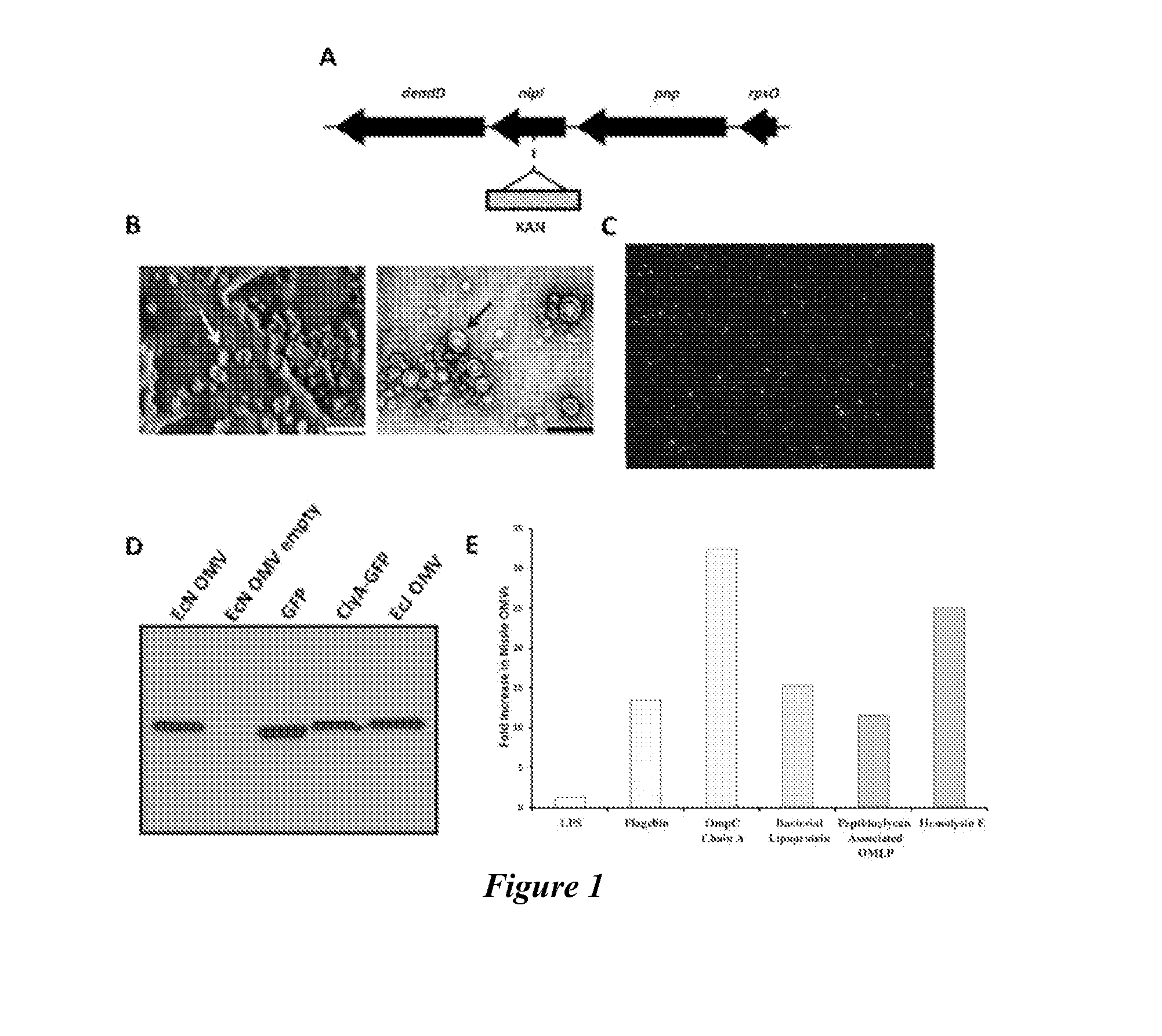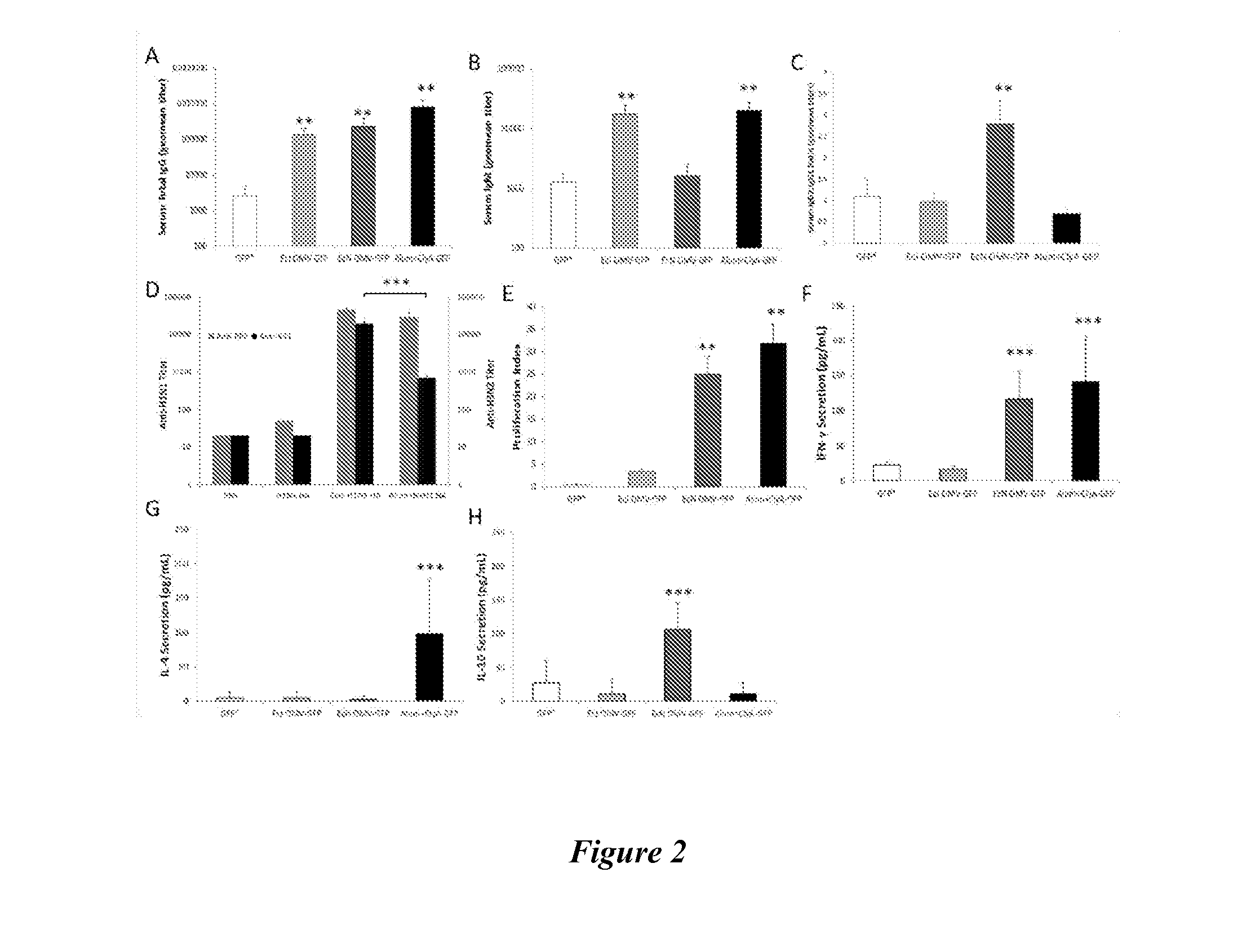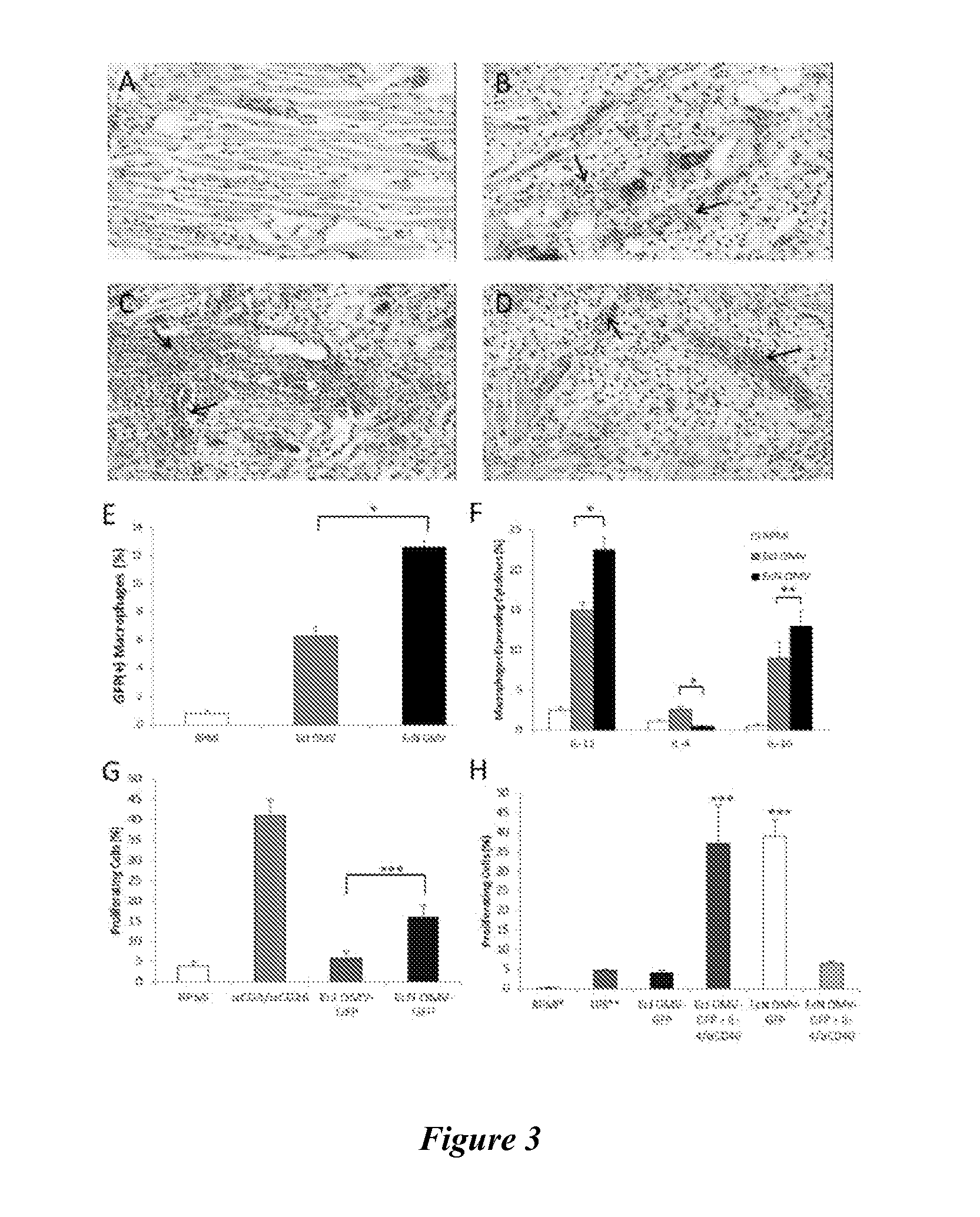Subunit vaccine delivery platform for robust humoral and cellular immune responses
a vaccine delivery platform and immune response technology, applied in snake antigen ingredients, antibody medical ingredients, peptide/protein ingredients, etc., can solve the problems of inability to generate protective pathogen-specific subunit vaccine technology, inability to apply novel global health applications, and often prohibitively expensive vaccine technology. to achieve the effect of suppressing local immunity, modulating t-cell cycling and expansion, and enhancing natural adjuvanting mechanisms
- Summary
- Abstract
- Description
- Claims
- Application Information
AI Technical Summary
Benefits of technology
Problems solved by technology
Method used
Image
Examples
example 1
EcN OMVs are Engineered as Recombinant Antigen Carriers Via a ClyA-Fusion Mechanism
[0139]Previously, the successful expression and functional folding of a variety of recombinant antigens on the surface of K12 E. coli OMVs by inducing expression of a chimera consisting of the antigen fused to the C-terminus of enterobacterial cytotoxin ClyA was reported (Kim et al., “Engineered Bacterial Outer Membrane Vesicles with Enhanced Functionality,”J. Mol. Biol. 380: 51-66 (2008), which is hereby incorporated by reference in its entirety) (FIG. 5). For the present study, green fluorescent protein (GFP) was selected as the primary model antigen for two reasons. First, GFP's natural fluorescence allowed simple quantitation of antigen content in all vaccine preparations, owing to the ClyA-antigen chimera's capacity to retain proper antigen folding upon outer membrane insertion (Chen et al., “Delivery of Foreign Antigens by Engineered Outer Membrane Vesicle Vaccines,”Proc. Nat. Acad. Sci. USA 107...
example 2
Immunization with EcN OMVs Induces Antigen-Specific TH1-Biased Immunity
[0140]To test the ability of EcN OMVs to generate a strong adaptive response to GFP, BALB / c mice were immunized via subcutaneous injection with formulations of OMVs containing ClyA-GFP and free of additional adjuvant (FIG. 7). To ensure the presence of a substantially competitive positive control, vesicle-free ClyA-GFP adsorbed onto an enhanced aluminum hydroxide (alum) adjuvant delivery system, Alhydrogel® was separately injected. IgG titers assayed four weeks after the final boost indicated induction of a strong humoral response by both EcN and EcJ OMVs comparable to the gold standard of alum (FIG. 2A), consistent with previous work (Chen et al., “Delivery of Foreign Antigens by Engineered Outer Membrane Vesicle Vaccines,”Proc. Nat. Acad. Sci. USA 107:3099-3104 (2010), which is hereby incorporated by reference in its entirety) and reflective of progressive generation of a robust response (FIG. 8). However, IgM ...
example 3
EcN OMVs Strongly Engage LPS-Dependent / Independent Innate Immunity
[0143]A key determining factor in adaptive immune response generation is the extent to which innate immunity is engaged (Schijns et al., “Vaccine Immunopotentiators of the Future,”Clin. Pharmacol. Ther. 82:750-755 (2007), which is hereby incorporated by reference in its entirety). While on a macroscopic level OMV vaccine inflammation was observed to be similar to that of the alum control in duration and recovery time (FIG. 11), such observations are not necessarily reflective of an adjuvant's capacity for local immune cell engagement and recruitment. Hence, the capacity of EcN OMV self-adjuvancy to robustly induce an innate response via initial dermal inflammation was further explored. Using a subdermal injection model in a BALB / c mouse ear and subsequent histological analysis, the acute inflammation response generated by both EcN and EcJ OMVs was assessed. The resulting inflammopathology revealed a surprisingly marke...
PUM
| Property | Measurement | Unit |
|---|---|---|
| Capacitance | aaaaa | aaaaa |
| Transport properties | aaaaa | aaaaa |
| Immunogenicity | aaaaa | aaaaa |
Abstract
Description
Claims
Application Information
 Login to View More
Login to View More - R&D
- Intellectual Property
- Life Sciences
- Materials
- Tech Scout
- Unparalleled Data Quality
- Higher Quality Content
- 60% Fewer Hallucinations
Browse by: Latest US Patents, China's latest patents, Technical Efficacy Thesaurus, Application Domain, Technology Topic, Popular Technical Reports.
© 2025 PatSnap. All rights reserved.Legal|Privacy policy|Modern Slavery Act Transparency Statement|Sitemap|About US| Contact US: help@patsnap.com



